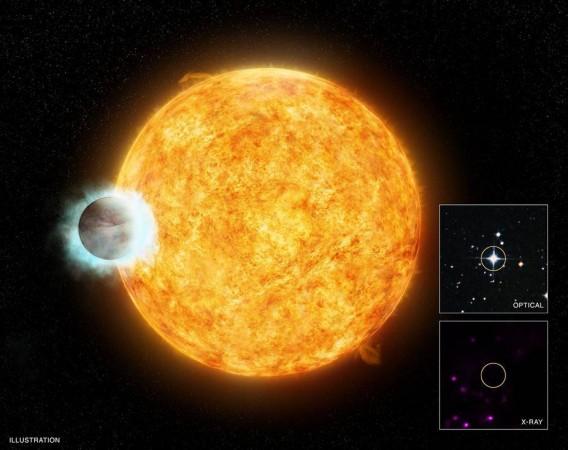
Recent research has revealed that the giant exoplanets that orbit their stars are likely to grow larger with age.
Also Read: Mysterious flying objects spotted along US-Mexico border [VIDEO]
According to researchers, this can help us find out more about these planets' interactions with their parent stars.
The presence of more than 3,400 worlds outside our solar system has been confirmed by astronomers over the past two decades. These findings have even led to discoveries of exoplanets classified as "hot Jupiters".
"Hot Jupiters" are exoplanets that orbit their parent star at a distance far closer than Mercury does with our Sun. Their size is comparable to the gas giants (Jupiter and Saturn) we see in our own solar system. They ususally have an orbital period of less than 10 days.
These exoplanets are not born as giant giants, even though they possess an unexpectedly large diameter. The heat emitted by the star they orbit is believed to "puff them up" over time.
"The size of a gas giant planet is primarily set by the heat in the deep interior of the planet, and since these planets are not generating [new] heat internally, you would expect them to cool and contract over time," said study lead author Joel Hartman, an astronomer at Princeton University.
"The only way they can be getting bigger over time is if some of the radiative energy from the star is somehow making its way deep into the planet and heating it."
Two exoplanets discovered in 2016, HAT-P-65b and HAT-P-66b, were analysed by researchers who found te possible reason behind the inflation of the planets. These exoplanets were spotted with the help of the Hungarian-made Automated Telescope Network (HATNet) in Hawaii and Arizona and are the biggest hot Jupiters discovered so far.
These exoplanets are found to weigh 1.2 times the sun's mass. Located at a distance of 2,745 and 3,025 light-years from Earth respectively, they orbit their stars at a distance 10 times closer than Mercury does the Sun.
"Hot Jupiters" are found to be around 1.9 and 1.6 times Jupiter's diameter with a density 0.5 and 0.8 times that of Jupiter, meaning that they are far too large for their weight.
Researchers compared these two enormous "hot Jupiters" with 200 other exoplanets that closely orbit their stars and came to the conclusion that these two were situated around old stars.
Exoplanets HAT-P-65b and HAT-P-66b are thought to be 5.46 billion and 4.66 billion years old, and the stars they orbit have been through 84% and 83% of their life cycle.
The luminosity of a star tends to increase as it grows older and reaches the stage known the Main Sequence -- which is said to be the most stable. Around 90% of the stars present in the universe, including the sun, are Main Sequence stars. Their masses can vary from 200 times the Sun's mass to one-tenth of it.
According to researchers, as the stars grow older they tend to inflate planets orbiting close to them.
"Hot Jupiters apparently get bigger as they age," said Hartman, according to Space.com.
"This new finding has major implications for our understanding of how planets form, how they evolve over time, and the physical processes at play inside of these planets," Hartman said.
He even expressed his interest in examining the exoplanets of those stars that have passed the Main Sequence stage.
"I would love to see whether gas giants on wide orbits, like our own Jupiter, become extremely inflated when they are significantly heated by the host. This would let researchers know how quickly planets react to changes in stellar radiation, he stated, according to Space.com.














